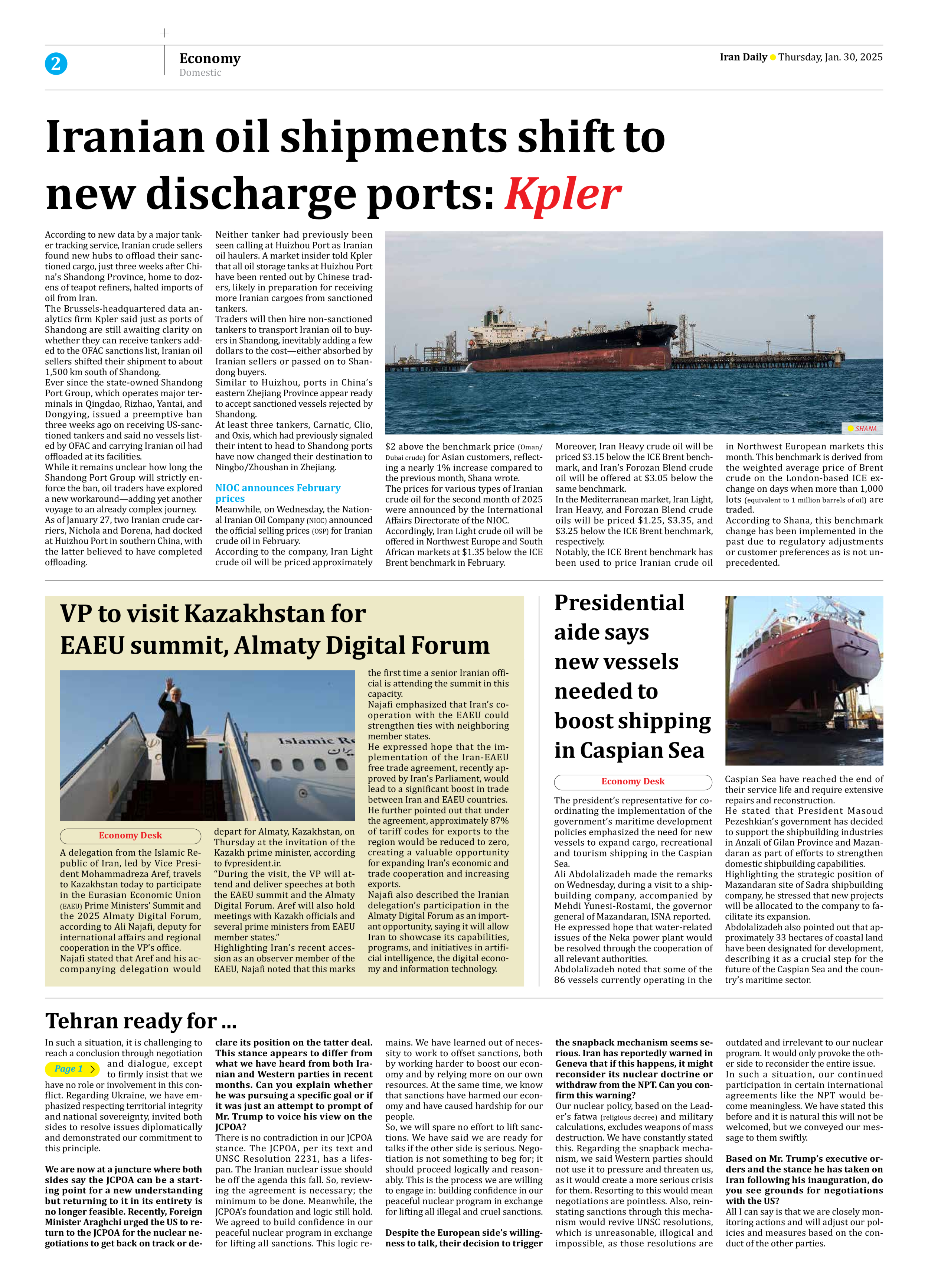
Iranian oil shipments shift to new discharge ports: Kpler
According to new data by a major tanker tracking service, Iranian crude sellers found new hubs to offload their sanctioned cargo, just three weeks after China’s Shandong Province, home to dozens of teapot refiners, halted imports of oil from Iran.
The Brussels-headquartered data analytics firm Kpler said just as ports of Shandong are still awaiting clarity on whether they can receive tankers added to the OFAC sanctions list, Iranian oil sellers shifted their shipment to about 1,500 km south of Shandong.
Ever since the state-owned Shandong Port Group, which operates major terminals in Qingdao, Rizhao, Yantai, and Dongying, issued a preemptive ban three weeks ago on receiving US-sanctioned tankers and said no vessels listed by OFAC and carrying Iranian oil had offloaded at its facilities.
While it remains unclear how long the Shandong Port Group will strictly enforce the ban, oil traders have explored a new workaround—adding yet another voyage to an already complex journey.
As of January 27, two Iranian crude carriers, Nichola and Dorena, had docked at Huizhou Port in southern China, with the latter believed to have completed offloading.
Neither tanker had previously been seen calling at Huizhou Port as Iranian oil haulers. A market insider told Kpler that all oil storage tanks at Huizhou Port have been rented out by Chinese traders, likely in preparation for receiving more Iranian cargoes from sanctioned tankers.
Traders will then hire non-sanctioned tankers to transport Iranian oil to buyers in Shandong, inevitably adding a few dollars to the cost—either absorbed by Iranian sellers or passed on to Shandong buyers.
Similar to Huizhou, ports in China’s eastern Zhejiang Province appear ready to accept sanctioned vessels rejected by Shandong.
At least three tankers, Carnatic, Clio, and Oxis, which had previously signaled their intent to head to Shandong ports have now changed their destination to Ningbo/Zhoushan in Zhejiang.
NIOC announces February prices
Meanwhile, on Wednesday, the National Iranian Oil Company (NIOC) announced the official selling prices (OSP) for Iranian crude oil in February.
According to the company, Iran Light crude oil will be priced approximately $2 above the benchmark price (Oman/Dubai crude) for Asian customers, reflecting a nearly 1% increase compared to the previous month, Shana wrote.
The prices for various types of Iranian crude oil for the second month of 2025 were announced by the International Affairs Directorate of the NIOC.
Accordingly, Iran Light crude oil will be offered in Northwest Europe and South African markets at $1.35 below the ICE Brent benchmark in February.
Moreover, Iran Heavy crude oil will be priced $3.15 below the ICE Brent benchmark, and Iran’s Forozan Blend crude oil will be offered at $3.05 below the same benchmark.
In the Mediterranean market, Iran Light, Iran Heavy, and Forozan Blend crude oils will be priced $1.25, $3.35, and $3.25 below the ICE Brent benchmark, respectively.
Notably, the ICE Brent benchmark has been used to price Iranian crude oil in Northwest European markets this month. This benchmark is derived from the weighted average price of Brent crude on the London-based ICE exchange on days when more than 1,000 lots (equivalent to 1 million barrels of oil) are traded.
According to Shana, this benchmark change has been implemented in the past due to regulatory adjustments or customer preferences as is not unprecedented.







